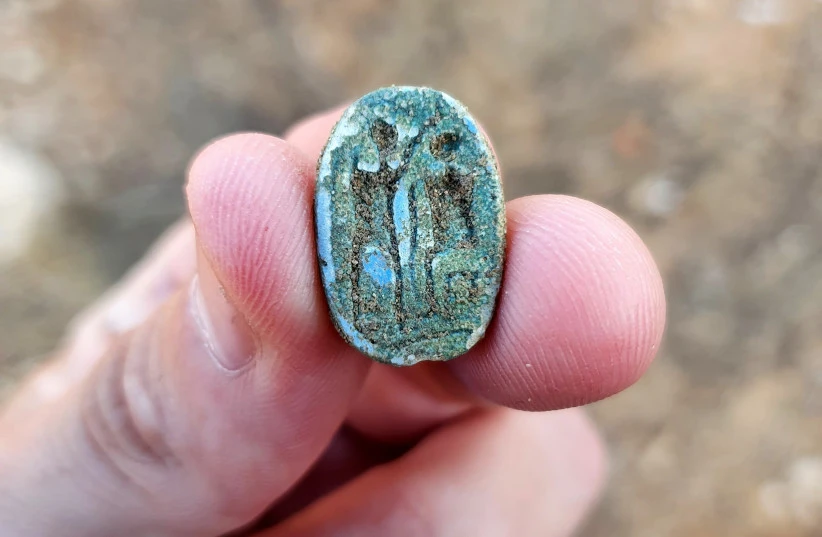
A run-of-the mill field trip in Azor, a town less than five miles away from the Israeli city of Tel Aviv, resulted in the discovery of a 3,000-year-old Egyptian amulet,the Jerusalem Post reports. The artifact was inscribed with symbols that Israeli experts said could signify Egypt’s rule over what was once the land of Caanan.
The scarab was discovered by Gilad Stern of the Israel Antiquities Educational Center (IAA), who was guiding a group of eighth-grade students from Azor Middle School on an archeologically themed field trip.
“We were wandering around when I saw something that looked like a small toy on the ground,” Stern toldthe Jerusalem Post. “An inner voice said to me: ‘Pick it up and turn it over.’ I was astonished: it was a scarab with a clearly incised scene, the dream of every amateur archaeologist. The pupils were really excited!”
On the flat side, the scarab is decorated with a seated figure on the right and a standing figure with a raised arm on the left with an elongated head that is thought to represent the crown of the Egyptian Pharaoh.
“This scene basically reflects the geopolitical reality that prevailed in the land of Canaan during the Late Bronze Age (1500-1000 BCE), when the local Canaanite rulers lived (and sometimes rebelled) under Egyptian political and cultural hegemony,” Amir Golani, an expert with the IAA, told the Jerusalem Post.
Golani added that the scarab in ancient Egypt was a symbol of power and status. “It may have dropped from the hands of an important figure of authority who passed through the area,” he said, “or it may have been deliberately buried in the ground along with other objects—and after thousands of years, it came to the surface.”


Pingback: Premium URL Shortener